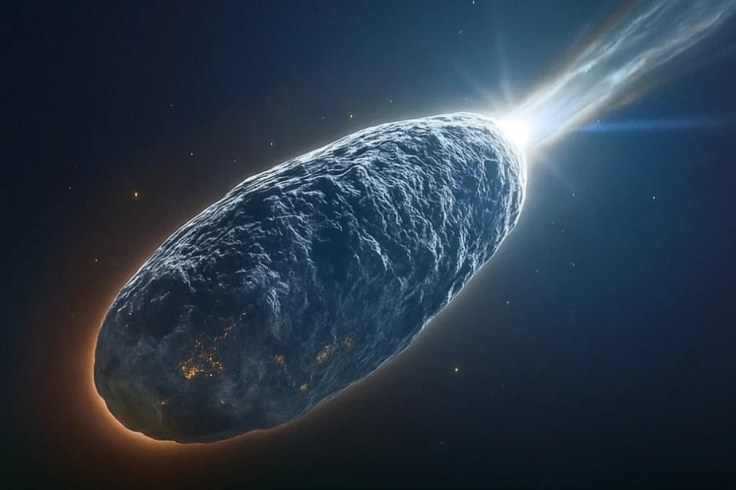Dr. Michio Kaku On 3i/Atlas: Top Physicist Counters Avi Loeb On Alien Spacecraft Theory - 'It's Garbage'
Kaku has rejected the idea that 3I/ATLAS is a functioning spacecraft.

The debate over the mysterious interstellar object 3I/ATLAS has taken a sharp turn after renowned theoretical physicist Dr Michio Kaku publicly dismissed claims that it could be an alien spacecraft.
Speaking in an interview with NewsNation on 8 November, Kaku said the object's unusual characteristics can be explained by natural causes, rather than advanced extraterrestrial engineering.
'A 7-Billion-Year-Old 'Garbage Collector'
According to Kaku, 3I/ATLAS is likely an ancient comet about seven billion years old that has travelled through multiple cosmic environments, collecting material along the way. He described it as a 'garbage collector' of space debris, which could explain its unusual chemical makeup.

The object, roughly the size of Manhattan, reportedly contains unusually high levels of nickel and iron, elements not typically found in comets within our solar system. Kaku attributed this to the object's vast age and exposure to different gases and cosmic dust throughout its interstellar journey.
'This comet is different because it's much older than anything we've seen locally,' Kaku told NewsNation. 'Over seven billion years, it absorbed all kinds of materials, which explains its odd composition.'
His assessment stands in contrast to claims from Harvard astrophysicist Avi Loeb, who has argued that 3I/ATLAS' irregular features, including its apparent lack of a classic cometary tail and its changing velocity, might indicate artificial propulsion.
Loeb's Position: 'Jets' or 'Thrusters'?
Loeb, who has been tracking 3I/ATLAS as it moves through the Milky Way, has drawn attention to what he describes as multiple 'jets' emerging from the object. Earlier this month, he said in interviews that seven or more jets appeared after the object passed close to the Sun on 29 October.

According to Loeb, these jets may be carrying vast amounts of mass, potentially around five billion tons and could behave like thrusters, depending on their speed and energy output. Loeb suggested that if the jets were indeed artificial, they might represent propulsion systems rather than natural outgassing, implying a non-natural origin.
He also noted that 3I/ATLAS has been losing mass rapidly and could have fragmented into smaller pieces after its solar pass. Loeb urged NASA to release high-resolution images captured by the Mars Reconnaissance Orbiter in early October, which remain undisclosed. He argues the data could help determine whether the object is a natural comet or something engineered.
Kaku Pushes Back on 'Alien Spacecraft' Claims
Kaku, however, has rejected the idea that 3I/ATLAS is a functioning spacecraft. He emphasised that speculation without quantifiable evidence risks misleading the public and creating unnecessary panic.

'Speculation is fine,' Kaku said, 'but you have to quantify it. Otherwise, you panic the public, and the public wants to know the truth.'
He also noted that while 3I/ATLAS did appear to pick up speed as it passed near the Sun, this doesn't necessarily mean propulsion is involved. A more likely explanation, he said, is that part of the comet broke away, altering its trajectory and velocity in a way that could appear artificial to observers.
'There could be natural reasons for the sudden change in speed,' Kaku explained. 'That's not a smoking gun.'
While Loeb's theories have drawn global media attention, many astrophysicists, including Kaku, remain sceptical. As 3I/ATLAS continues its trajectory out of the solar system, scientists across disciplines are racing to study its properties before it disappears once more into interstellar space.
© Copyright IBTimes 2025. All rights reserved.





















